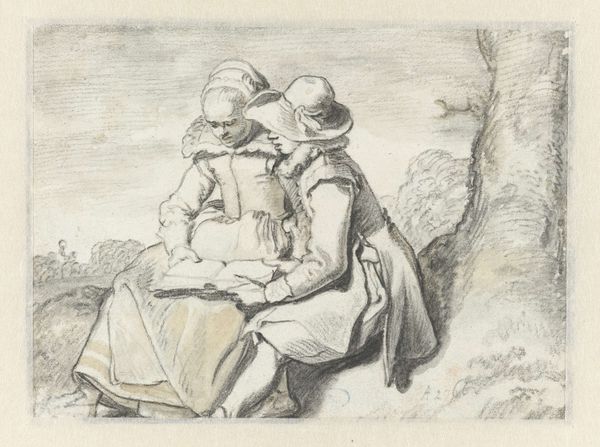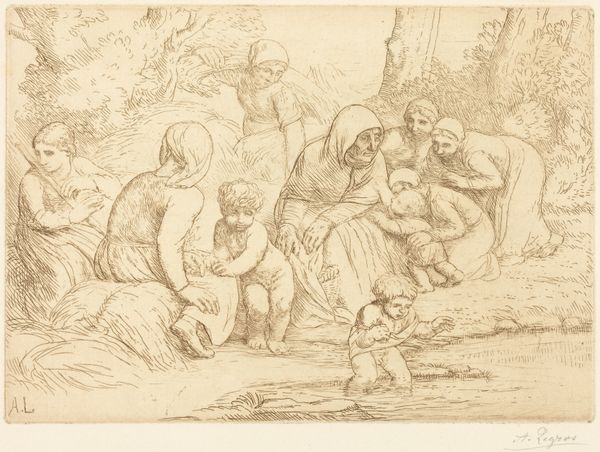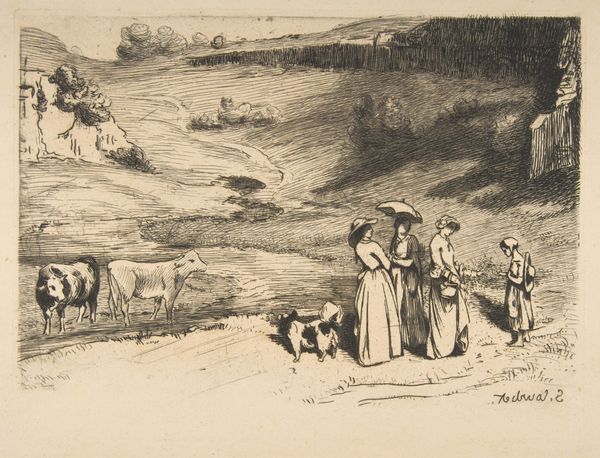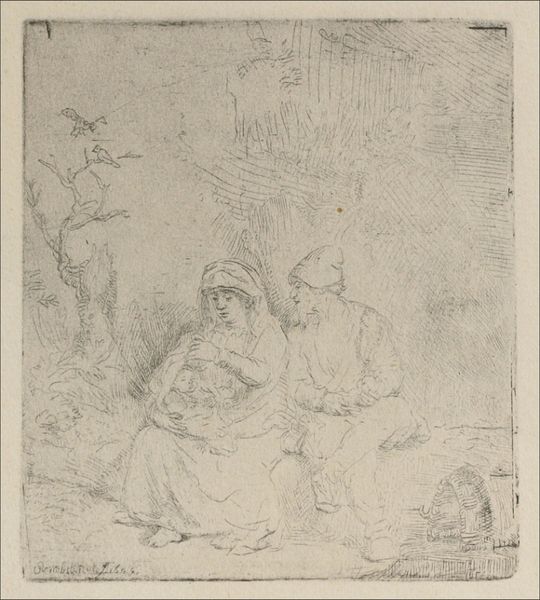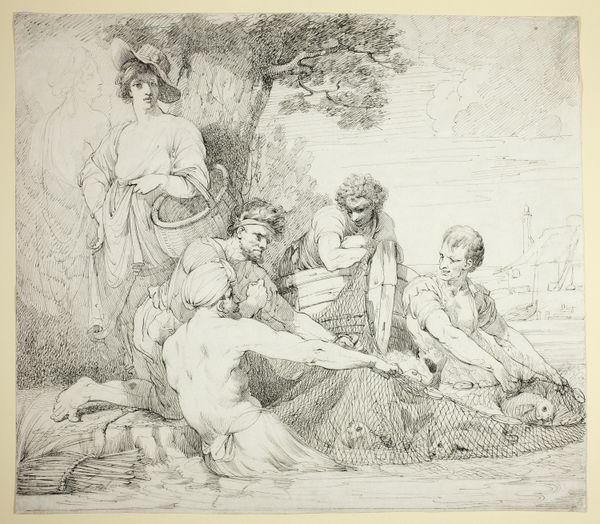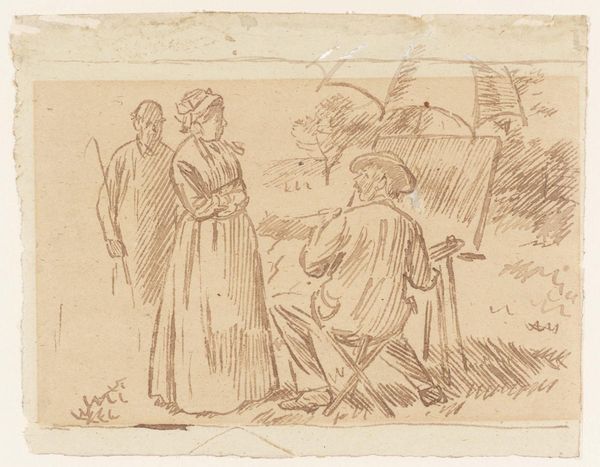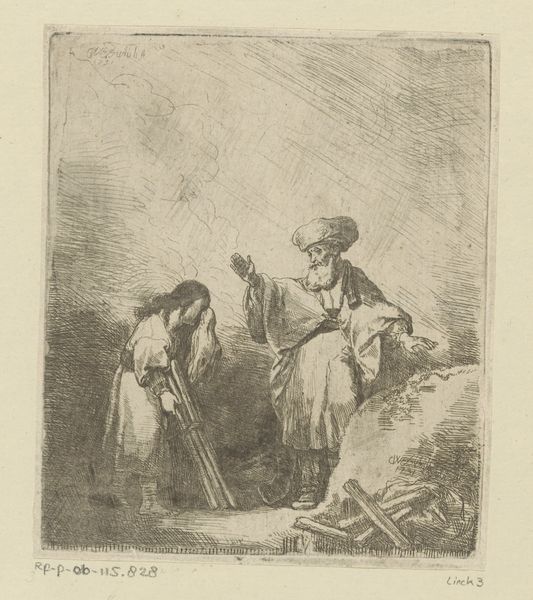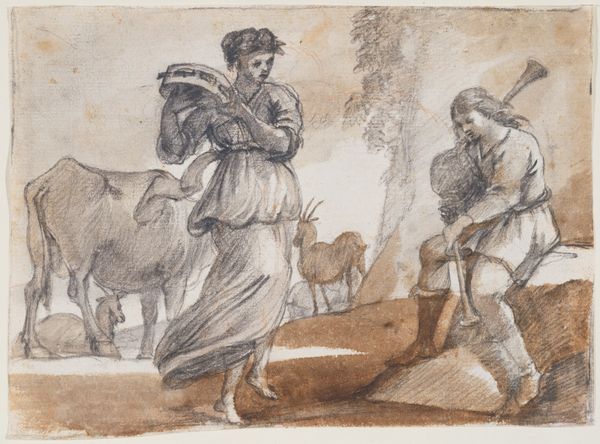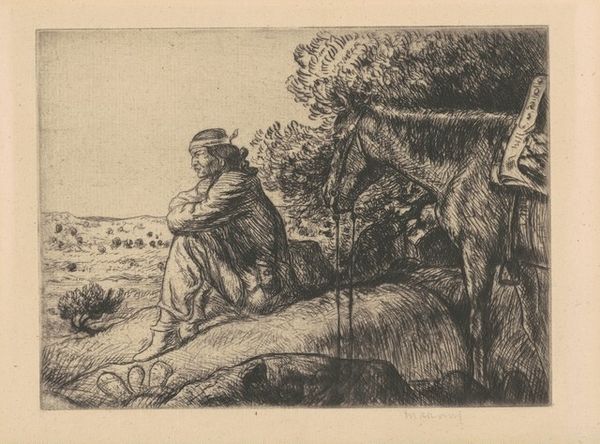
drawing, pencil, chalk
#
pencil drawn
#
drawing
#
16_19th-century
#
pencil sketch
#
landscape
#
german
#
pencil
#
chalk
#
genre-painting
#
realism
Copyright: Public Domain
Curator: Here we have Otto Scholderer’s "Farm workers returning home", created around 1890, which currently resides here at the Städel Museum. Editor: The first thing that strikes me is the texture created by the pencil and chalk. You can almost feel the weight of the day on these figures through the density of the strokes. Curator: Absolutely. The work depicts laborers after a long day. Scholderer was part of a wave of Realist artists in Germany who wanted to capture everyday life outside of the salons. We can see how these depictions evolved within the late 19th century, with considerations to socio-economic status. Editor: Indeed, this drawing acts as a social record of the material conditions and labor inherent to agrarian life. What interests me, however, is the composition itself. See the subtle ways Scholderer uses shading to imply the coarse texture of the workers' clothing and tools. These are the instruments of their trade. Curator: Right, but consider the audience too. While documenting this form of labor, it also seems to play into romantic notions that urban elites held towards the rural working class. Are they really being seen? Or are they props within a larger social narrative about hard labor, duty, and family in the countryside? Editor: That’s valid, but isn't it both? The fact remains, whether idealized or not, Scholderer carefully detailed the specifics of how these people were burdened, what tools they relied on, and the burdens they literally carry on their backs, like that giant sack and the overflowing basket. Look at the commitment involved to translate these details onto paper! Curator: Well said. Ultimately, a piece like this demonstrates that what is deemed 'worthy' to depict reveals a society's values. Editor: And understanding the tangible qualities helps us realize what such work meant for those in its orbit.
Comments
No comments
Be the first to comment and join the conversation on the ultimate creative platform.



